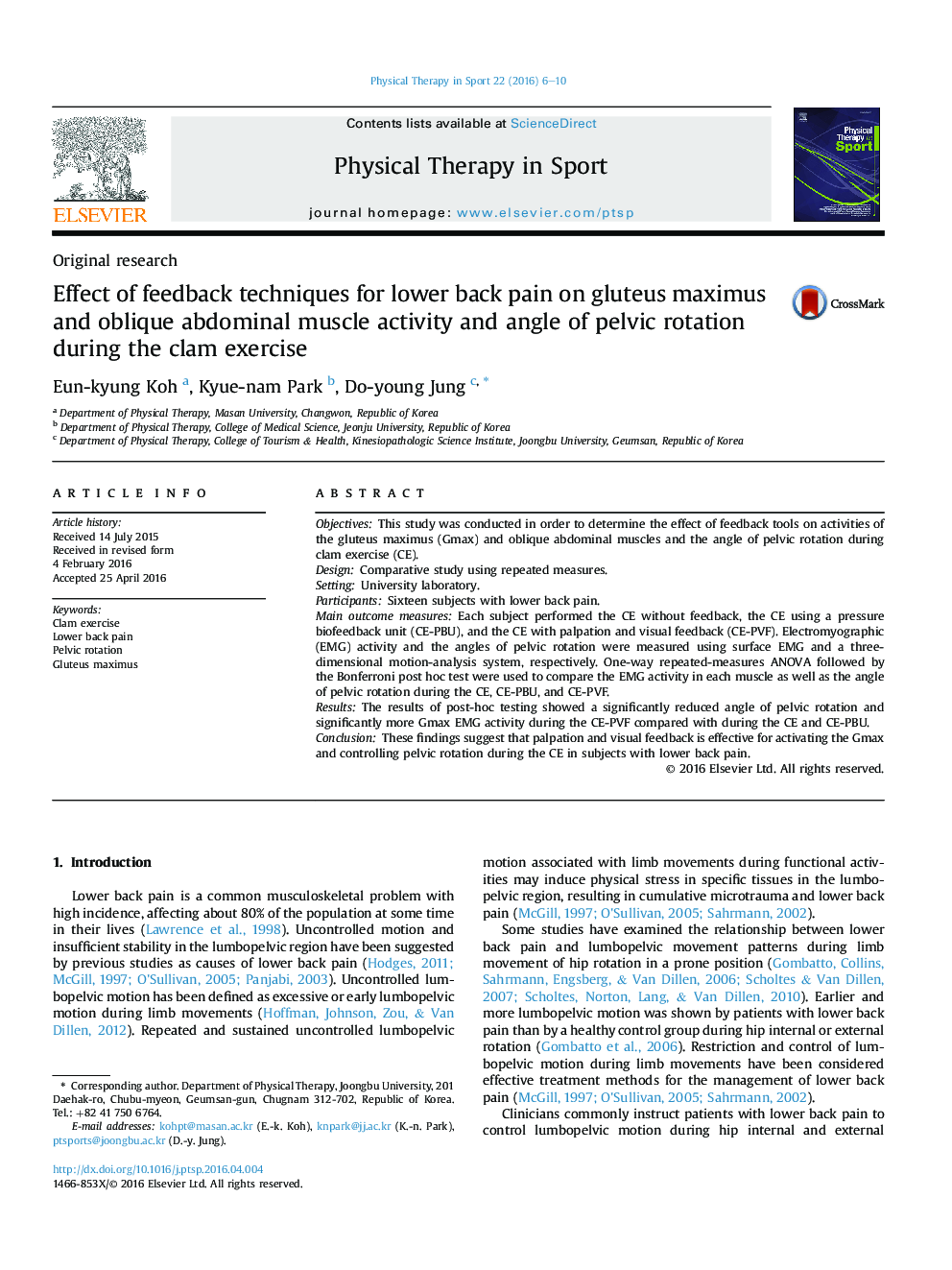| Article ID | Journal | Published Year | Pages | File Type |
|---|---|---|---|---|
| 2703930 | Physical Therapy in Sport | 2016 | 5 Pages |
•Clinicians use feedback tools for controlling excessive pelvic rotation.•CE is recommended to strengthen the hip abductors and external rotators.•CE-PVF is effective for activating the Gmax and controlling pelvic rotation.•Optimal feedback technique should be selected to effectively control pelvic rotation.
ObjectivesThis study was conducted in order to determine the effect of feedback tools on activities of the gluteus maximus (Gmax) and oblique abdominal muscles and the angle of pelvic rotation during clam exercise (CE).DesignComparative study using repeated measures.SettingUniversity laboratory.ParticipantsSixteen subjects with lower back pain.Main outcome measuresEach subject performed the CE without feedback, the CE using a pressure biofeedback unit (CE-PBU), and the CE with palpation and visual feedback (CE-PVF). Electromyographic (EMG) activity and the angles of pelvic rotation were measured using surface EMG and a three-dimensional motion-analysis system, respectively. One-way repeated-measures ANOVA followed by the Bonferroni post hoc test were used to compare the EMG activity in each muscle as well as the angle of pelvic rotation during the CE, CE-PBU, and CE-PVF.ResultsThe results of post-hoc testing showed a significantly reduced angle of pelvic rotation and significantly more Gmax EMG activity during the CE-PVF compared with during the CE and CE-PBU.ConclusionThese findings suggest that palpation and visual feedback is effective for activating the Gmax and controlling pelvic rotation during the CE in subjects with lower back pain.
